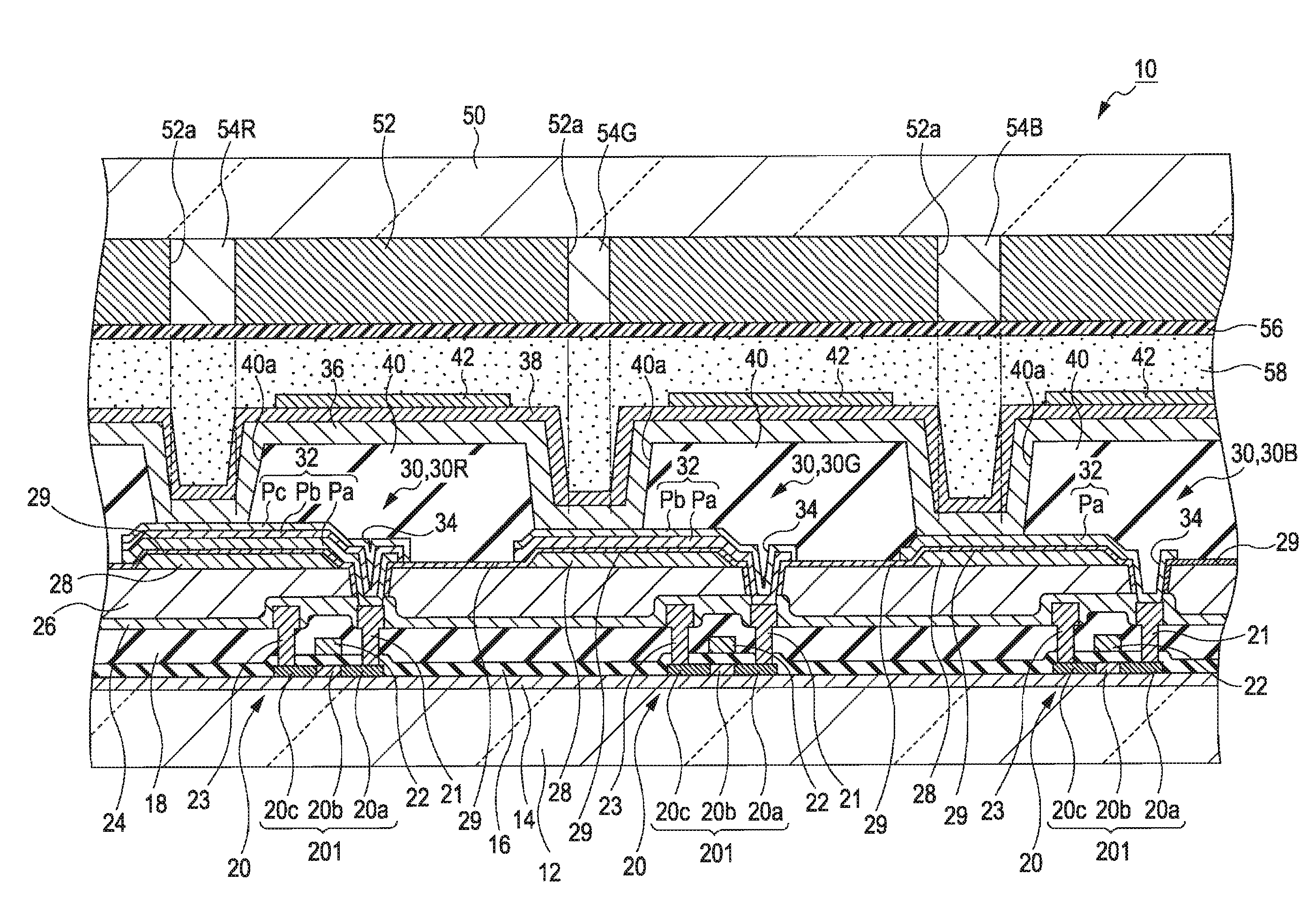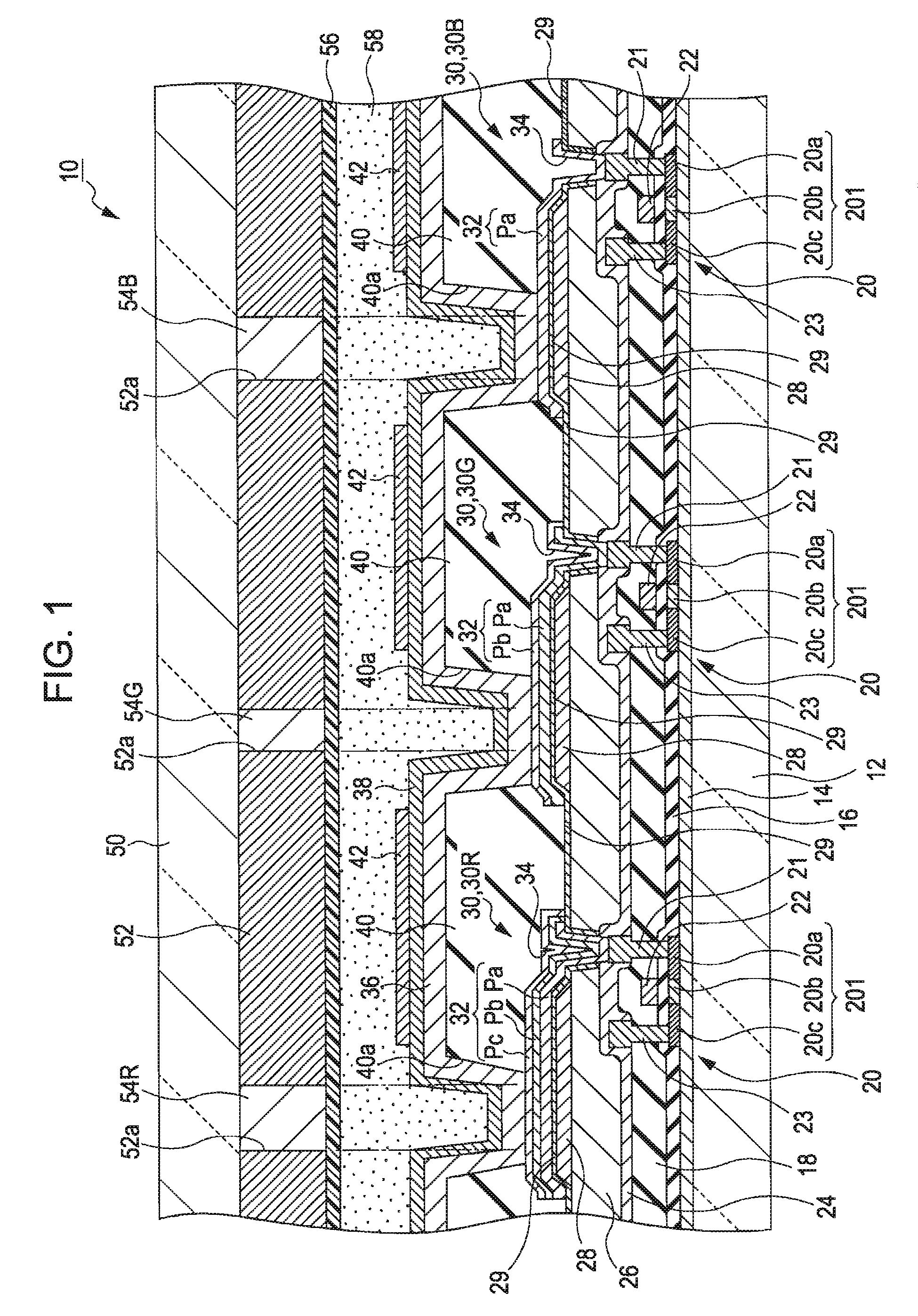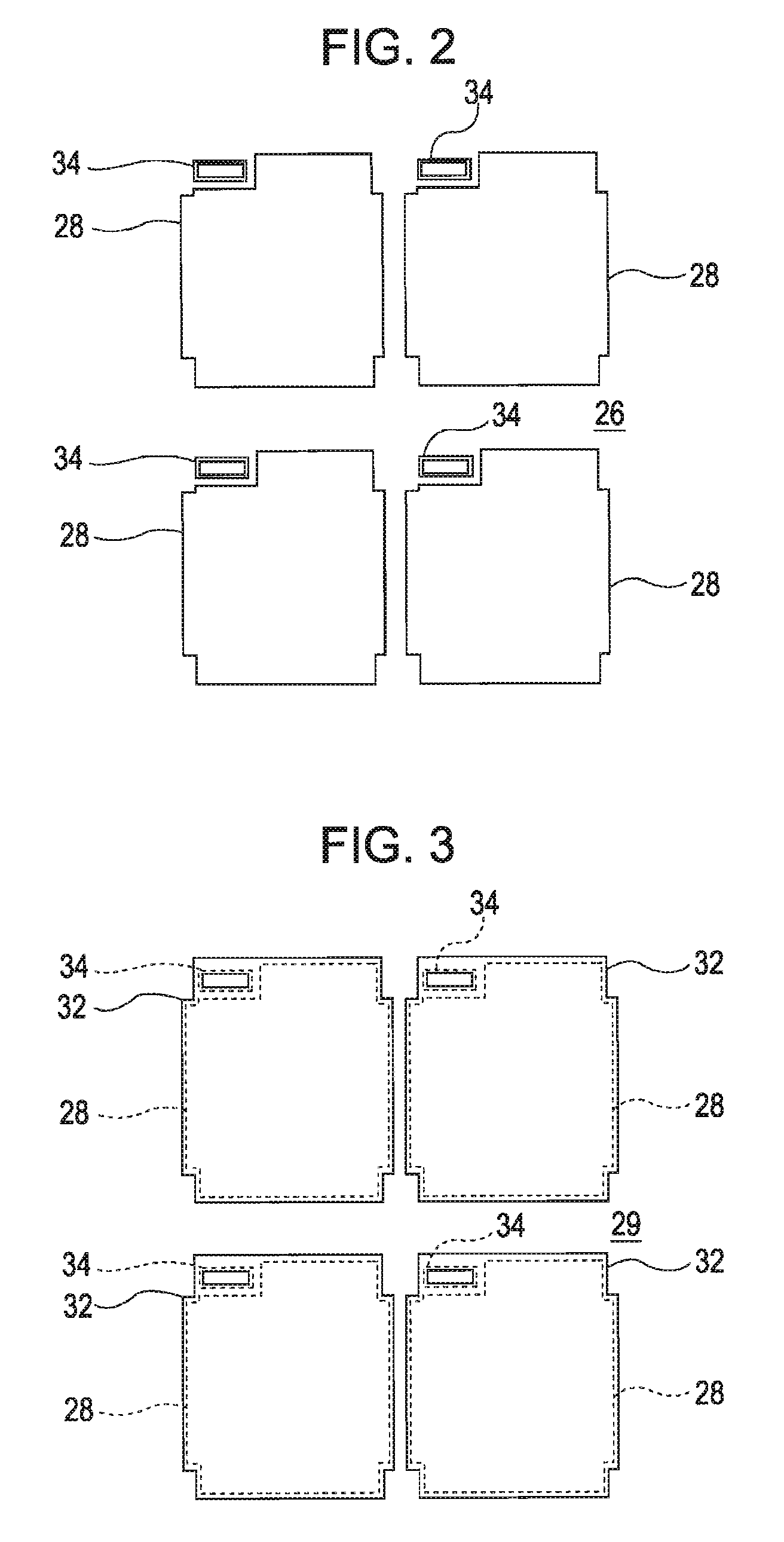Emissive device and electronic apparatus having light transmitting portions of light shielding layer being smaller than partition opening
a technology of light shielding layer and emissive device, which is applied in the direction of discharge tube/lamp details, organic semiconductor devices, discharge tubes luminescnet screens, etc., can solve the problems of affecting accuracy, divergence of pencils of light, and disadvantageous variation of luminance and chromaticity in a single pixel, so as to achieve uniform quality in each pixel and enhance the directivity of pencils
- Summary
- Abstract
- Description
- Claims
- Application Information
AI Technical Summary
Benefits of technology
Problems solved by technology
Method used
Image
Examples
Embodiment Construction
[0027]Embodiments of the invention will be described below with reference to the accompanying drawings. The drawings are not to scale.
Emissive Device
[0028]FIG. 1 is a fragmentary cross-sectional view of an emissive device 10 according to an embodiment of the invention. As shown in FIG. 1, the emissive device 10 includes a substrate 12 composed of, for example, glass or plastic. A substrate-protecting layer 14 mainly composed of silicon oxide is disposed on the substrate 12. A plurality of p-channel pixel transistors 20 are disposed on the substrate-protecting layer 14. The pixel transistors 20 are thin-film transistors (TFTs) and are arrayed in a matrix. The pixel transistors 20 are connected to respective light-emitting elements 30, which are described below, disposed on the substrate 12 to drive the light-emitting elements 30. That is, an active-matrix driving system is used in this emissive device 10. The emissive device 10 includes many light-emitting elements 30 and many pixel ...
PUM
 Login to View More
Login to View More Abstract
Description
Claims
Application Information
 Login to View More
Login to View More - R&D
- Intellectual Property
- Life Sciences
- Materials
- Tech Scout
- Unparalleled Data Quality
- Higher Quality Content
- 60% Fewer Hallucinations
Browse by: Latest US Patents, China's latest patents, Technical Efficacy Thesaurus, Application Domain, Technology Topic, Popular Technical Reports.
© 2025 PatSnap. All rights reserved.Legal|Privacy policy|Modern Slavery Act Transparency Statement|Sitemap|About US| Contact US: help@patsnap.com



